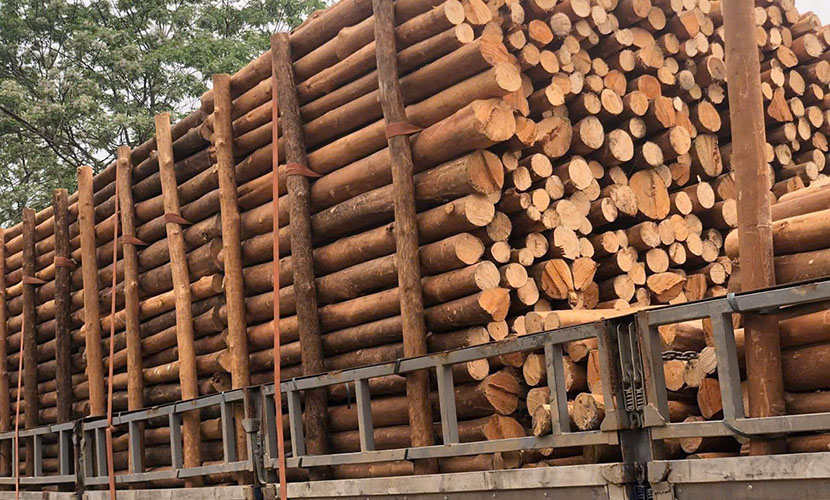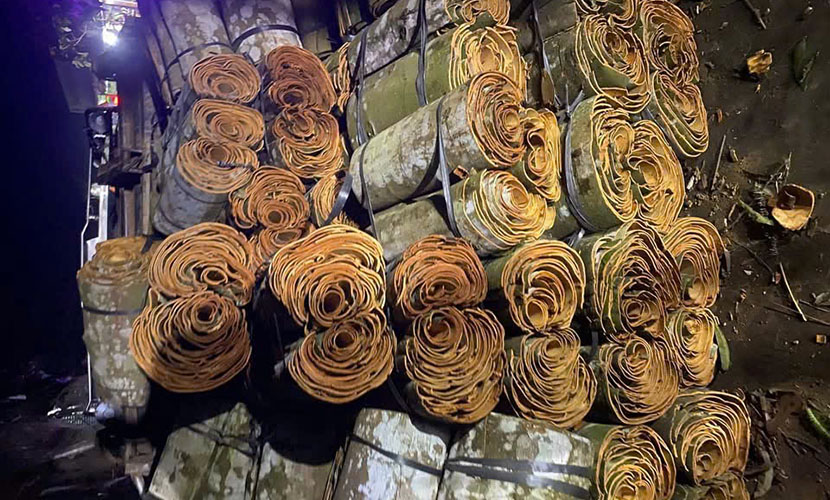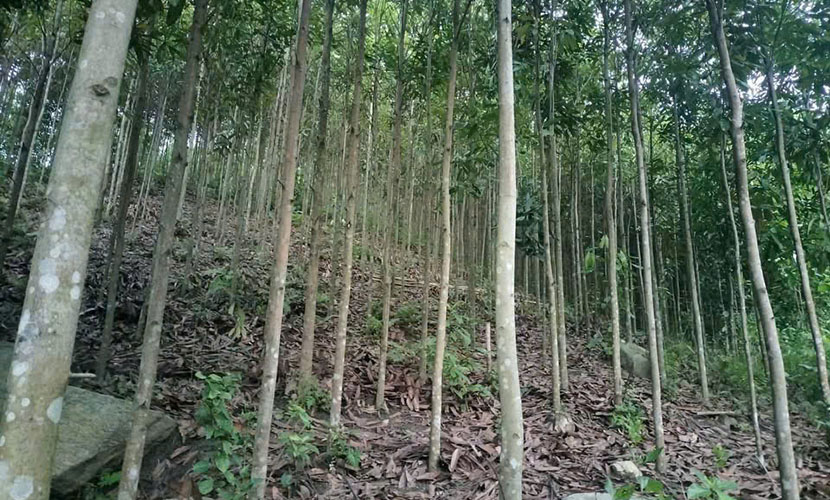
Tran Yen is a district of the mountaineous province of Yen Bai. Like Van Yen district, Tran Yen is also considered as the “cinnamon capital” of Vietnam. Recently, Vietnamese cinanmon products have brought high income for local farmers. Specifically, they have generated annual revenues of tens of billions of Vietnamese Dongs.
Once barren hillsides are now lush with cinnamon trees. More importantly, this transformation reflects a shift in mindset toward sustainable and green agricultural production from farmers.
As of the end of 2024, over 14,509 hectares of cinnamon plantations across the province have been certified organic. Of this, Van Yen district accounts for 10,730 ha, Tran Yen for 3,433 ha, and Van Chan for 346 ha.

Vietnamese cinnamon products: Dried wood
The province aims to expand cultivation area of Vietnamese cinanmon products to over 35,000 hectares by the end of 2025. In which, there are 20,000 hectares of organic cinnamon.
Each year, Yen Bai farmers produce more than 22,000 tons of dried cinnamon barks. Also, they harvest more than 86,000 tons of cinnamon branches and leaves. These cinnamon products are raw materials for pharmaceuticals, food, and essential oils for both domestic consumption and export.
In addition, cinnamon trees yield over 200,000 cubic meters of timber annually. They generate tens of billions of Vietnamese Dongs in income. This is an impressive figure for a mountainous province still facing economic challenges.
Previously, Tran Yen has not been known for cinnamon cultivation. However, the district has now expanded to over 20,000 hectares of Vietnamese cinanmon products. There are major cinnamon-growing areas such as Tan Dong, Luong Thinh, Dao Thinh, Viet Thanh.

Vietnamese cinnamon barks
According to district estimates, the area produces approximately 5,000 tons of dried bark. Also, it produces over 22,000 tons of branches and leaves, and 45 tons of cinnamon essential oil each year. They contribute to more than VND 400 billion in annual income for local farmers.
Several areas have developed organic cinnamon production zones. They have also fostered value chain linkages between households to enhance the cinnamon brand in the market.
Many local farmers are now skilled in cinnamon cultivation. However, the concepts of clean, organic cinnamon models are still relatively new. However, this shift presents both an opportunity and a driving force for Tran Yen growers. It encourages them to not only increase the value of their product but also elevate its standing in the domestic market.
Today, Tran Yen leads the province in clean and organic cinnamon production. This has resulted in high-quality cinnamon with greater essential oil content.
According to local farmers, beyond selecting high-quality seedlings, they also apply special cultivation techniques. Particularly, they use herbicides but manually clear weeds, avoid chemical fertilizers once trees reach 4–5 years old.

Vietnamese cinnamon forest
They also should refrain from pruning branches to maximize essential oil content. Trees are planted densely at first and selectively thinned at 4–5 years to retain the strongest ones for bark harvesting. Full harvesting only occurs after 7–10 years of growth.
A farmer said: “My family has grown Vietnamese cinnamon products for a long time. However, it was more of a trend in the beginning. After realizing its economic potential, we switched to organic practices. Now, we have over 10 hectares, and even just thinning out trees each year brings in several hundred million VND. Our house, motorbikes, TV, and even our children’s education have all come from cinnamon earnings.”
Organic cinnamon production is a direction that is suitable with today’s development trends. It not only increases economic value but also builds the Tran Yen cinnamon brand for broader recognition. The district is striving to expand organic cinnamon cultivation and make it a key economic sector for the region.
Vietnamese source: https://nongnghiephuuco.vn/yen-bai-nguoi-dan-tran-yen-doi-doi-cuoc-song-kha-gia-nho-trong-que-7127.html
